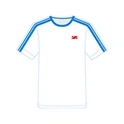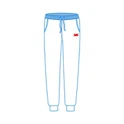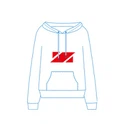How do I find a good jacket?
Finding a good jacket can be a challenging task, especially with so many options available in the market. The right jacket not only keeps you warm and protects you from the elements but can also be a stylish addition to your wardrobe. To help you in your quest for the perfect jacket, this article will guide you through the process of finding a good jacket that meets your needs and preferences. So, let''s dive in!
Know Your Needs and Preferences
Before starting your search for a good jacket, it''s essential to identify your needs and preferences. Ask yourself questions like: What will be the primary purpose of the jacket? Will you be using it for outdoor activities like hiking, skiing, or simply for daily wear? How warm do you need it to be? Do you have any specific style or color preferences?
Understanding your requirements will not only help you narrow down your choices but also make the shopping process more efficient. For example, if you live in an area with harsh winters, a heavy-duty insulated jacket would be suitable. Conversely, if you plan to use the jacket for casual wear during mild weather conditions, a lightweight and breathable option would be more appropriate.
Consider the Material
The material of the jacket plays a significant role in its performance and durability. There are several materials commonly used for jackets, each with its pros and cons. Let''s take a look at some popular options:
1. Down: Down jackets are known for their excellent insulation properties. They are filled with soft feathers from ducks or geese, which create pockets of air that help retain body heat. Down jackets are lightweight, compressible, and highly efficient in cold conditions. However, they may lose their insulating properties when exposed to moisture.
2. Synthetic: Synthetic jackets are made from materials like polyester and nylon. They are a great alternative to down jackets, especially for those who prefer animal-free products. Synthetic jackets offer insulation even when wet, making them suitable for wet climates or outdoor activities involving water. They are also generally more affordable than down jackets.
3. Wool: Wool jackets are known for their warmth and breathability. They have natural insulation properties, even when wet, and are suitable for various weather conditions. Additionally, wool is a sustainable and eco-friendly option. However, wool jackets may be bulkier and heavier compared to down or synthetic jackets.
4. Leather: Leather jackets are timeless and stylish. They provide excellent protection against wind and are durable. Leather jackets are often associated with a rugged or edgy look and are suitable for both casual and formal occasions. However, they may not offer the same level of insulation as down or synthetic jackets.
5. Technical Fabrics: Many jackets incorporate technical fabrics like Gore-Tex, which provide waterproof and windproof properties. These jackets are ideal for outdoor activities in challenging weather conditions. However, technical fabrics can be more expensive compared to other materials.
Consider the advantages and disadvantages of each material based on your needs, climate, and personal preferences to make an informed decision.
Evaluate the Construction and Features
The construction and features of a jacket contribute to its functionality, comfort, and overall quality. Here are some essential aspects to evaluate:
1. Seams: Check the seams of the jacket for quality and durability. Seams that are double-stitched or sealed with waterproof tape offer greater resistance to wear and tear.
2. Insulation: If you opt for a down or synthetic jacket, consider the quality and amount of insulation. Higher fill power in down jackets indicates better insulation, while synthetic jackets may have insulation measured in grams.
3. Zippers: Inspect the zippers for smooth operation and durability. Look for jackets with high-quality, sturdy zippers that are less likely to break or get stuck.
4. Pockets: Consider the number, size, and placement of pockets. Pockets are not only convenient for storage but can also provide extra warmth by acting as hand pockets or chest pockets.
5. Hood: If you require a hood, check if it is adjustable and whether it provides adequate coverage and protection. Some jackets offer detachable hoods, allowing you to customize your wearing experience.
6. Cuffs and Collar: Look for adjustable cuffs and collars to seal in warmth and keep the cold air out. Some jackets feature additional features like thumbholes or fleece linings for added comfort.
7. Durability: Assess the overall durability of the jacket by examining the quality of the fabric, stitching, and reinforcements. A good jacket should be able to withstand regular wear and tear for an extended period.
Try Before You Buy
Once you have shortlisted a few jackets that meet your needs and preferences, it''s crucial to try them on. Fit is an essential factor that can significantly impact your comfort and satisfaction with the jacket. Pay attention to the following aspects while trying on jackets:
1. Size: Jackets should fit comfortably without feeling too tight or too loose. Ensure that you have enough room for layering if necessary. Different brands may have different sizing, so consult the size chart if shopping online.
2. Movement: Move around in the jacket to assess its range of motion. You should be able to perform common activities like raising your arms or bending over without feeling restricted.
3. Length: Consider the length of the jacket, especially if you prefer more coverage or if you plan to wear it over specific garments like dresses or suits.
4. Comfort: Pay attention to how the jacket feels against your skin. Ensure that there are no rough edges or uncomfortable materials that may cause irritation or discomfort.
5. Reflection of Style: Assess whether the jacket aligns with your personal style and complements your existing wardrobe. It''s important to choose a jacket that not only serves its purpose but also makes you feel confident and stylish.
Research and Compare
Before making a final decision, take some time to research and compare different brands, models, and prices. Read reviews from other customers to gain insights into the jacket''s performance, durability, and overall value. Consider factors like warranty, return policy, and after-sales service offered by the brand. Additionally, comparing prices across different retailers or online platforms can help you find the best deal or any ongoing promotions.
Maintaining Your Jacket
Once you have found and purchased your ideal jacket, it''s essential to take proper care of it to ensure its longevity and performance. Always follow the manufacturer''s care instructions, but here are some general tips for maintaining your jacket:
1. Cleaning: Regularly clean your jacket according to the care instructions. Many jackets are machine washable, but certain materials like leather or technical fabrics may require specialized cleaning methods. Avoid using harsh detergents or fabric softeners that can damage the jacket''s material or interfere with its water-repellent properties.
2. Drying: Dry your jacket as per the manufacturer''s instructions. Down jackets often require special care during drying to maintain their loft and insulation properties. Synthetic jackets are usually more forgiving and can be tumble dried on low heat. Hang or lay flat your jacket to air dry, avoiding direct sunlight or heat sources whenever possible.
3. Storage: Properly store your jacket during periods of non-use. Clean and dry the jacket thoroughly before storing it in a cool, dry place, away from direct sunlight and moisture. Use garment bags or covers to protect the jacket from dust and pests. Avoid compressing down jackets for prolonged periods, as it may affect the loft and insulation properties.
Conclusion
The search for a good jacket involves considering your needs and preferences, evaluating materials, construction, and features, trying on jackets for the perfect fit, researching and comparing options, and maintaining your chosen jacket properly. By following these steps, you can find a good jacket that not only keeps you warm and protected but also adds style to your wardrobe. Remember, investing in a high-quality jacket is a wise decision as it will last longer and provide better performance in the long run.







